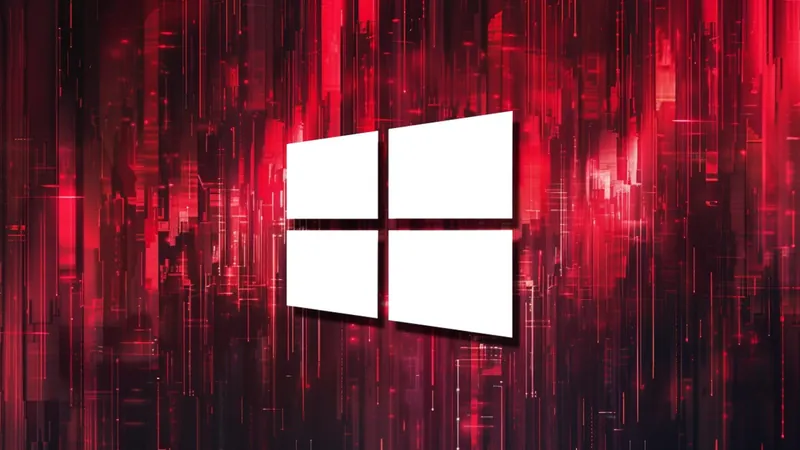
Windows 10 Users at Risk: Urgent Call to Upgrade to Avoid Major Security Breach!
2025-01-05
Author: Wei Ling
Windows 10 End of Support
As Windows 10 approaches its end of support on October 14, 2025, cybersecurity firm ESET is sounding the alarm for users still relying on this decade-old operating system. ESET's security expert Thorsten Urbanski warns that it’s a critical time for users to take action: 'It’s five minutes to twelve to avoid a security fiasco for 2025.'
ESET's Recommendations
ESET strongly recommends that users immediately upgrade to Windows 11 or consider alternative operating systems like Linux. Many users who delay this decision may find themselves vulnerable to serious security threats, including cyber attacks and potential data loss, as the end of support date draws near.
Implications of End of Support
After October 2025, Windows 10 will no longer receive free security updates unless users opt for extended security updates (ESU), which come at a significant cost. This exposes users to emerging vulnerabilities, potentially leading to severe data breaches and unauthorized access to sensitive information.
Current Usage Statistics
In Germany alone, approximately 32 million computers are still running Windows 10, accounting for about 65% of all household devices. Comparatively, Windows 11 is installed on only about 33% of devices nationwide, emphasizing the slow transition. Internationally, statistics from StatCounter reveal that nearly 63% of Windows users worldwide are still using Windows 10, while around 34% have switched to Windows 11.
Windows 11 Adoption Among Gamers
For gamers, the picture is slightly different: a recent survey shows that over 54% utilize Windows 11, reflecting a trend among gamers who often upgrade their hardware to stay competitive. However, many businesses and general consumers still rely on older machines that run Windows 10 effectively, often postponing necessary upgrades due to their current systems meeting their needs.
Comparison with Windows 7 Transition
The impending transition is notably more perilous than the migration from Windows 7, which saw about 70% of users on Windows 10 before Windows 7’s support ended. 'This situation is more of a concern than when we saw the end of Windows 7 support in early 2020,' Urbanski stated. 'Cybercriminals are acutely aware of these statistics and are gearing up for the vulnerability gap once support expires.'
Trusted Platform Module (TPM) Requirement
One of the significant hurdles for users considering the switch is the Trusted Platform Module (TPM) requirement for Windows 11. Many older devices that run Windows 10 smoothly may not meet this hardware requirement, preventing an easy upgrade to the latest operating system. Microsoft has made it explicit that the TPM requirement is 'non-negotiable' as it underpins critical security protocols within the operating system, such as cryptographic key storage and credential protection, as well as integration with Secure Boot and Windows Hello for Business.
Extended Security Updates Costs
For those unable to upgrade their devices to Windows 11, Microsoft does offer extended security updates, targeting mainly businesses and organizations at a steep price. Costs for these updates can add up quickly, starting from $61 in the first year and escalating to $244 by the third year, totaling an eye-watering $427 over three years for continued support.
Final Call to Action
As the deadline approaches, users are strongly encouraged to evaluate their current system and consider making the switch without further delay. Failure to act could result in dire consequences as cyber threats continue to evolve and exploit outdated systems. Don’t wait until it’s too late—protect your data and upgrade today!

 Brasil (PT)
Brasil (PT)
 Canada (EN)
Canada (EN)
 Chile (ES)
Chile (ES)
 Česko (CS)
Česko (CS)
 대한민국 (KO)
대한민국 (KO)
 España (ES)
España (ES)
 France (FR)
France (FR)
 Hong Kong (EN)
Hong Kong (EN)
 Italia (IT)
Italia (IT)
 日本 (JA)
日本 (JA)
 Magyarország (HU)
Magyarország (HU)
 Norge (NO)
Norge (NO)
 Polska (PL)
Polska (PL)
 Schweiz (DE)
Schweiz (DE)
 Singapore (EN)
Singapore (EN)
 Sverige (SV)
Sverige (SV)
 Suomi (FI)
Suomi (FI)
 Türkiye (TR)
Türkiye (TR)
 الإمارات العربية المتحدة (AR)
الإمارات العربية المتحدة (AR)